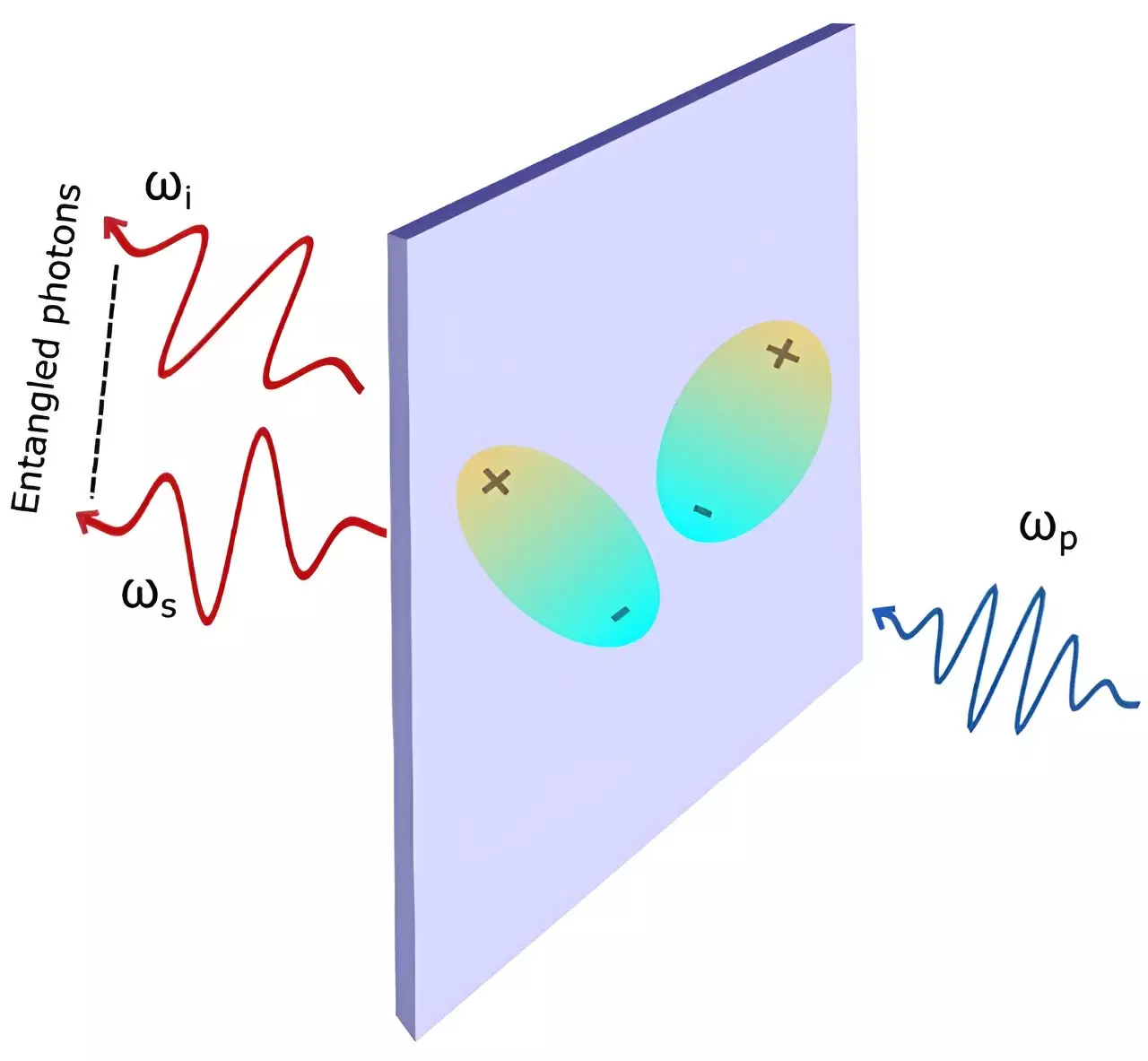Excitonic resonances and transitions between excitons have been shown by scientists from the National University of Singapore (NUS) to significantly increase the efficiency of generating entangled photon pairs. This breakthrough could potentially lead to the development of efficient ultrathin quantum light sources. Quantum entanglement, which is the cornerstone of many quantum technologies, involves the phenomenon where the properties of two quantum particles are linked, even when they are separated by vast distances.
The research team, led by Associate Professor Su Ying Quek, has demonstrated that the efficiency of spontaneous parametric down-conversion (SPDC) can be enhanced by harnessing many-body excitonic interactions present in non-linear optical crystals. These interactions occur between negative and positive charges created when light interacts with the crystal, forming pairs of opposite charges known as excitons. The team’s findings, published in the journal Physical Review Letters, highlight the significant increase in SPDC efficiency when these charges are in close proximity, depending on the energy or frequency of the light.
An interesting aspect of the research is the potential use of ultrathin crystals to address the phase matching problem associated with SPDC. Although ultrathin crystals were typically avoided for SPDC due to the belief that their efficiency decreases with material volume, the team’s study suggests that stronger excitonic interactions in these ultrathin crystals can actually alleviate this issue. This makes ultrathin crystals a promising source for producing entangled photons, offering new possibilities for quantum technologies.
The team applied their theoretical approach to NbOI2, a layered non-linear optical material, to study both SPDC and second harmonic generation (SHG), the reverse process of SPDC. By simulating SHG intensities based on the polarization angle of incident light, the researchers found that their simulations aligned well with previously published experimental work. They also noted that excitonic enhancement is particularly strong when the frequency of the “pump” beam closely matches an excitation frequency in the crystal.
The discoveries made by the research team at NUS pave the way for generating entangled photons using ultrathin materials, which can be more easily integrated into hybrid quantum-photonic platforms for next-generation devices. The ability to enhance SPDC through excitonic interactions opens up new possibilities for advancing quantum technologies and creating more efficient quantum light sources.
The findings of this study offer valuable insights into the role of excitonic resonances and transitions in increasing the efficiency of generating entangled photon pairs. By harnessing these interactions within non-linear optical crystals and exploring the use of ultrathin materials, researchers are moving closer to developing advanced quantum technologies and quantum light sources for various applications.


Leave a Reply
You must be logged in to post a comment.